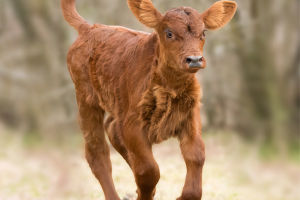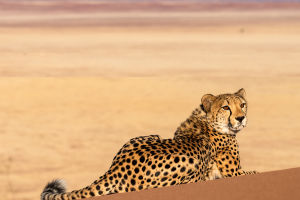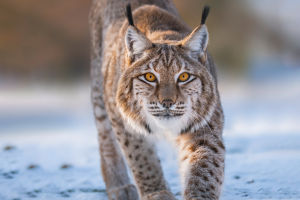The red-crowned crane stands as a grand and majestic member of the crane family and is amongst the rarest and most endangered cranes globally.
Below is a comprehensive introduction to the red-crowned crane:
1. Physical Characteristics:
The red-crowned crane boasts a body length of approximately 1.5 to 1.7 meters, coupled with an impressive wingspan ranging from 2.3 to 2.5 meters.
The plumage of this magnificent bird is predominantly gray, while the exposed skin on its head exhibits a vibrant shade of red, further intensified on the forehead and crown, thus earning its name as the "red-crowned" crane.
Sporting a slender and elongated neck, sturdy legs, and black feet, the red-crowned crane exhibits elegance and grace.
Its iris showcases a lovely yellow hue, while the mouth displays a slightly curved, grey beak with a sharp tip.
2. Distribution:
The red-crowned crane primarily inhabits East Asia, including regions in Northeast China, and the Korean Peninsula. It thrives in diverse open wetland ecosystems such as swamps, wetlands, rivers, and farmlands.
3. Behavior and Ecology:
The red-crowned crane exhibits omnivorous tendencies, with its diet encompassing insects, small fish, frogs, plant seeds, rhizomes, and aquatic plants.
A key characteristic of these cranes is their migratory behavior. During the winter, they embark on migration from their breeding grounds to warmer southern regions, returning to their breeding grounds in the spring.
While predominantly forming groups during the breeding season, red-crowned cranes also create small flocks during other periods.
In the breeding season, these cranes select suitable wetland habitats for nesting, often placing their nests near water sources within these wetlands or even in rice fields.
4. Conservation Status:
The International Union for Conservation of Nature (IUCN) has designated the red-crowned crane as an endangered species. Its existence faces threats from habitat destruction, human disturbances, illegal hunting, and climate change.
Numerous nations have implemented conservation measures to safeguard the red-crowned crane, including the establishment of nature reserves, educational campaigns, and strengthened legal protection, all aimed at preserving this precious bird.
5. Kushiro City Red-Crowned Crane Nature Park:
The Kushiro City Red-Crowned Crane Nature Park, located in eastern Hokkaido, serves as a vital breeding ground and habitat for these cranes.
At this nature park, visitors can behold the captivating sight of red-crowned cranes during the breeding season, witnessing these graceful creatures as they roost and forage freely amidst the picturesque wetlands.
The park may offer bird-watching platforms, informative centers, and other facilities, enhancing visitors' opportunities to observe and learn about red-crowned cranes. Additionally, the park's natural beauty allures photography enthusiasts and ecotourists.
A primary conservation objective of this nature park is to safeguard the red-crowned crane, a rare and endangered species symbolizing the region. Furthermore, the park is committed to protecting local biodiversity, including other wetland birds and plants.
6. Prime Seasons for Viewing Red-Crowned Cranes:
- Breeding Season Spring to Summer
The breeding season offers optimal opportunities to witness red-crowned cranes as they breed in wetlands, grasslands, and other suitable nesting sites.
- Best viewing time: April to September
Viewing highlights: Behold the enthralling scenes of red-crowned cranes engaging in pair dances, constructing nests, nurturing their fledglings, and observing young cranes in the process of learning to fly.
- Migration Season Autumn to Winter
Autumn marks the initiation of red-crowned crane migration, as they journey south from their breeding grounds to seek warmer winter regions.
The optimal viewing time varies based on geographical location, climate, the migration path of red-crowned cranes, and local breeding habits.
Aspiring observers are advised to familiarize themselves with the target area's conditions in advance, including the red-crowned crane migration timetable, local conservation sites, and guided tour services, to ensure a remarkable and well-timed viewing experience.


